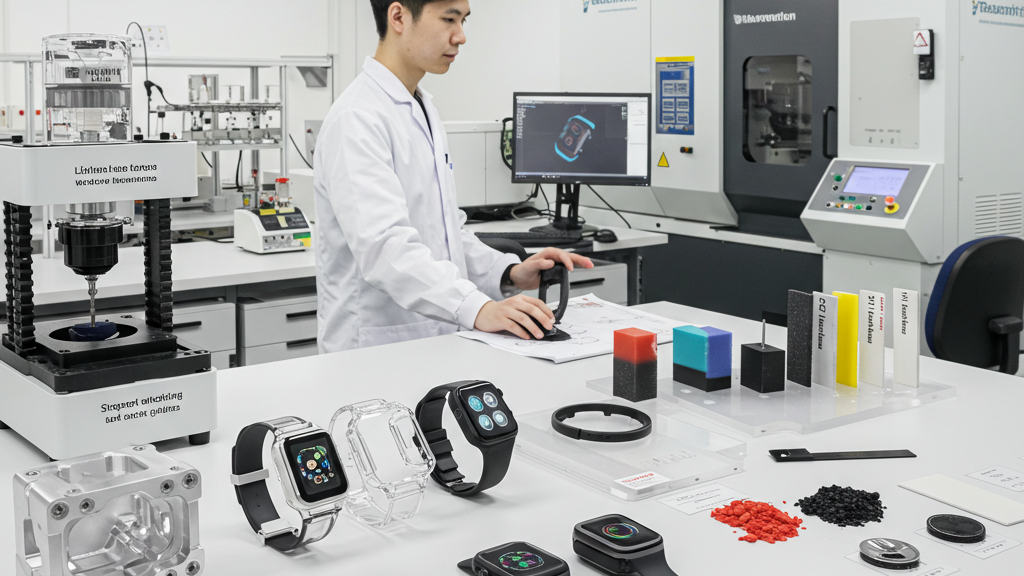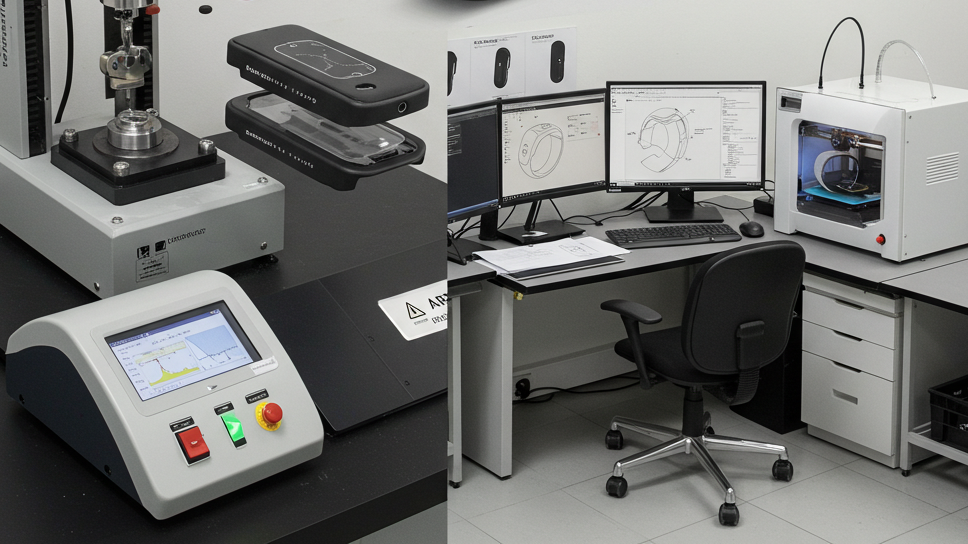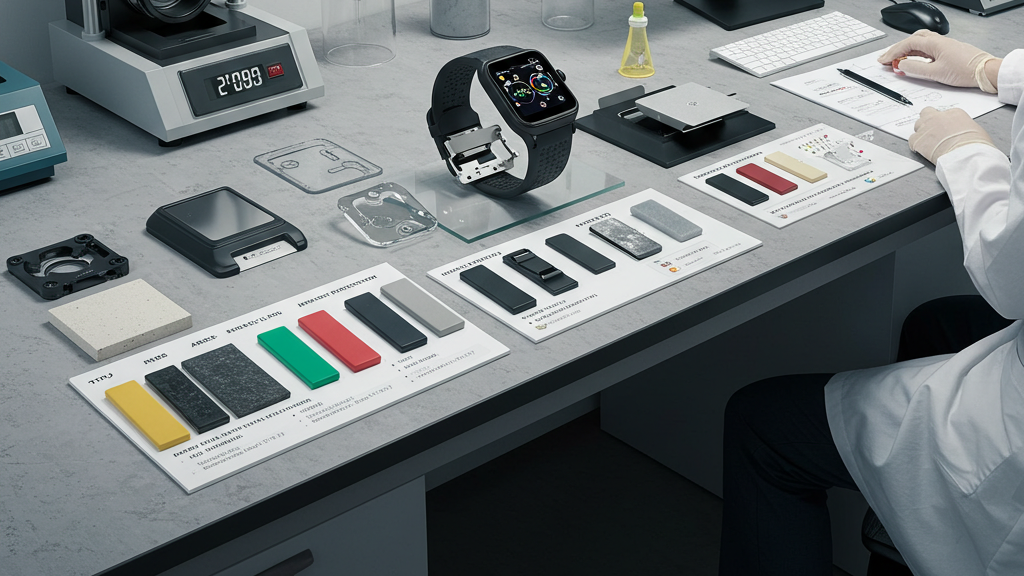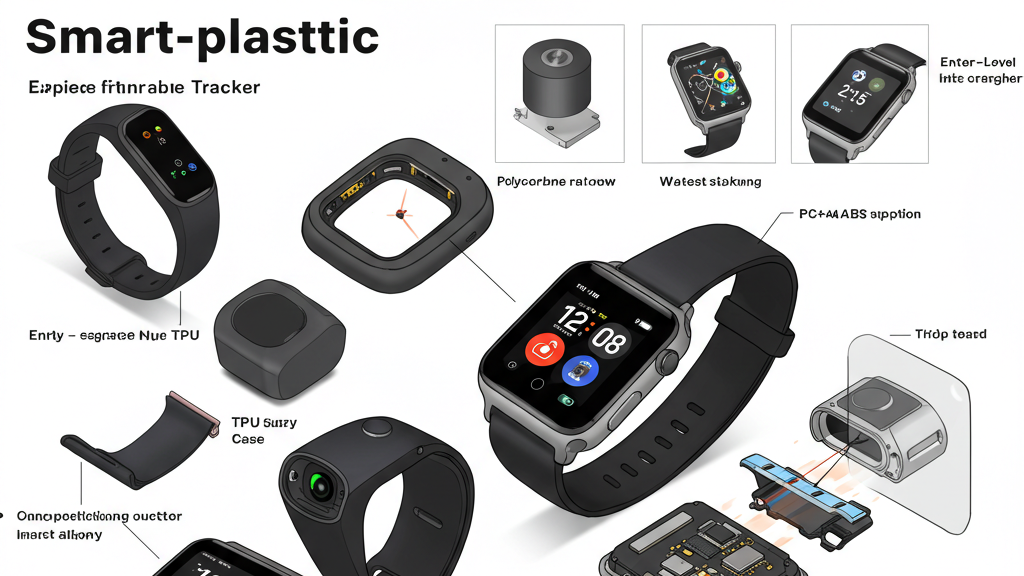
The increasing popularity of smart wearable devices highlights the importance of lightweight and comfortable designs. Lightweight plastics, due to their plasticity, low density, and low cost, have become a crucial material choice for device design. However, this reliance also exposes their insufficient durability when facing daily impacts and wear. Balancing lightness with robustness has become a critical challenge for the industry.
Lightweight plastics have contributed to the widespread adoption and cost control of smart wearable devices. However, the limitations of their impact resistance increase the risk of device damage. Therefore, while pursuing lightweight and cost-effectiveness, how can we improve the durability of devices? Are there better materials or design strategies available?
How Reliant are Smart Wearable Devices on Impact-Resistant Plastics?

From smartwatches to fitness trackers, plastics are virtually ubiquitous, forming the skeleton and housing of these devices. Discussing the reliance of smart wearable devices on impact-resistant plastics is not only about the durability of the devices themselves but also touches on material selection, design innovation, and users’ considerations of the long-term value of the product.
- Structure and Housing: In pursuit of lightweight and cost-effectiveness, smart wearable devices rely heavily on engineering plastics for their structural components and housings.
- Screen Protection Components: Some devices also use plastics for their screen protection components, which may affect the edge impact resistance.
- Flexibility Requirements: To achieve flexibility and wearing comfort, the flexibility of plastics makes them difficult to replace in certain applications.
- High-End Product Trends: Although high-end products are starting to adopt more impact-resistant materials, plastics remain the mainstream choice in the market.
What are the Main Limitations of Lightweight Plastics in terms of Impact Resistance?

While lightweight plastics offer the advantages of lightness and cost-effectiveness for smart wearable devices, their inherent physical properties often become performance bottlenecks when it comes to withstanding accidental impacts or daily wear and tear. Exploring the limitations of lightweight plastics in terms of impact resistance helps us understand the durability challenges currently facing smart wearable devices.
- Hardness and Strength: Lightweight plastics have lower hardness and strength, making them susceptible to scratches, cracks, and even breakage.
- Deformation Resistance: Lightweight plastics are prone to permanent deformation upon impact, making it difficult to effectively disperse and absorb impact forces.
- Toughness and Brittleness: Some lightweight plastics lack sufficient toughness and are more prone to becoming brittle after prolonged use or at low temperatures.
- Abrasion Resistance: Lightweight plastics do not have high surface hardness and are easily worn down by daily friction.
What Alternative Materials or Technologies Can Enhance Impact Resistance?

To break away from the reliance on traditional lightweight plastics and significantly enhance the impact resistance of smart wearable devices, advancements in materials science and engineering technology offer new possibilities. Exploring these cutting-edge alternative materials and technical approaches will bring innovation to the design and manufacturing of the next generation of smart wearable devices.
- Surface Coating Technology: Applying high-hardness coatings can enhance the scratch resistance and slight impact resistance of the housing.
- Flexible Materials and Shock-Absorbing Structures: Combining flexible materials and shock-absorbing designs can disperse and absorb energy upon impact.
- Advanced Screen Protection: Using stronger protective glass and bonding processes can improve the impact resistance of the screen.
- Integrated Molding Processes: Integrated manufacturing processes help improve the strength and impact resistance of the overall device structure.
Overview of impact materials and technology
|
Alternative Materials |
Main Advantages |
Main Limitations/Challenges |
Potential Applications |
| High-Strength Metal (Stainless Steel) | High hardness, good impact and wear resistance | Relatively heavy, higher cost | High-end smartwatch cases |
| Advanced Ceramics (Zirconia) | Extremely high hardness, excellent scratch resistance | Higher brittleness, high processing difficulty, high cost | High-end smartwatch bezels, backplates |
| Carbon Fiber Composites | Lightweight, high strength, excellent impact resistance | High cost, complex processing | Sporty smartwatches, high-end accessories |
| Specialty Engineering Plastics (PC Alloy) | Relatively lightweight, design flexibility, improved impact resistance | Impact resistance may not match metals and ceramics | Mid-to-low-end smartwatch cases and structural parts |
The Role of Lightweight Plastics in Wearable Device Applications
Lightweight plastic is a key material for wearable devices due to its light weight, ease of shaping, and low cost, enabling device portability and diverse designs. It is widely used in cases and flexible straps, directly affecting wearing comfort and appearance. In the future, how to maintain lightness while improving the impact resistance and sustainability of plastics will be an important direction for design.
1.Foundation for Lightweight Comfort: The low density of lightweight plastic is key to the lightness and wearing comfort of wearable devices.
2.Wings for Design Functionality: The high plasticity of plastic helps devices achieve diverse designs and functional integration.
3.Path to Cost-Effective Mass Production: The ease of processing and low cost of plastics facilitate the large-scale production of devices.
4.Endowment of Special Properties: Through selection and modification, plastics can endow devices with specific functions and properties.
Conclusion
Lightweight plastics are key to the lightness, design diversity, and low cost of smart wearable devices. However, their insufficient impact resistance affects device durability. The industry is exploring alternative materials such as metals, ceramics, and carbon fiber, and is adopting structural optimization, coatings, and shock-absorbing technologies to enhance impact resistance.
For expert assistance in implementing for your production needs, visit our resource center or contact us. Let’s help you scale up your manufacturing with precision and efficiency!
Post time: Apr-11-2025
